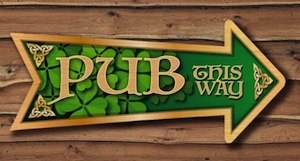May 23rd (Thursday) - Sightseeing And Jameson Distillery Home (Daily Diary)
We got ready and dressed in our exploring attire. First, we had a light breakfast at the hotel, and then we went off to see Dublin on the Jump-On/Jump-Off bus. For $40 (39 Euros), you can spend all day on the bus, getting on and off at the various sights within the city. Such a deal!

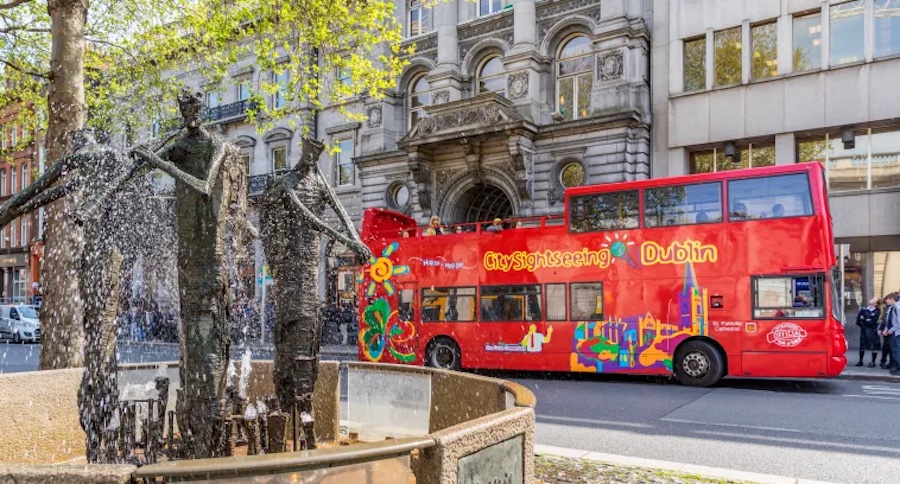
We got a birds eye view of the city!
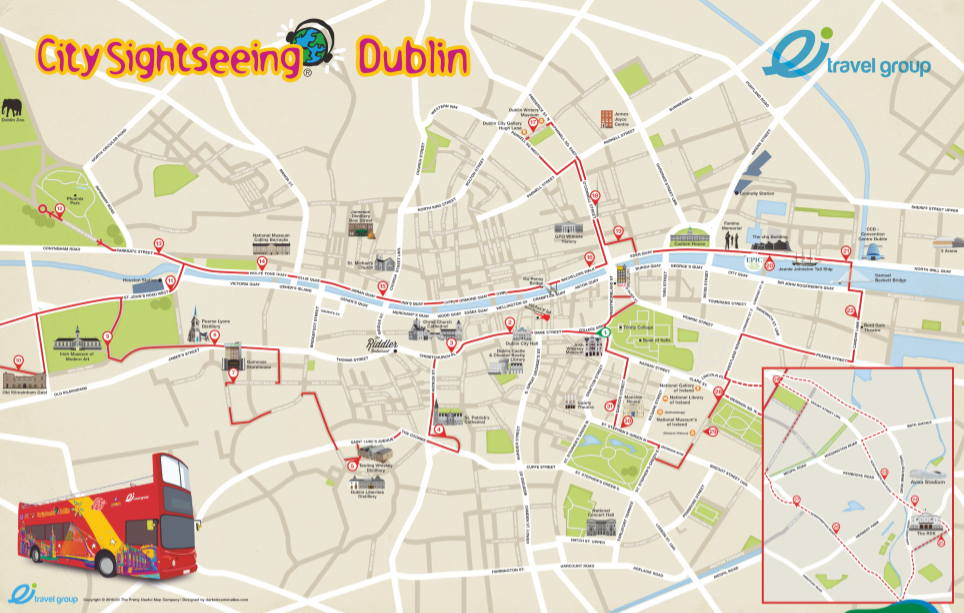
The walk took us by the "Grand Canal". There were barges on the canal with people living inside.
The canal can be used by barges up to 12 feet in the beam. The canal passes through 36 locks and crosses the River Liffey near Sallins on the Leinster Aqueduct, a stone structure of four arches designed by Richard Evans. Commercial navigation ceased in 1960, but the main line remains open for recreational use.

The boats can get permits to use the canal.
They control the canal level using 36 different locks along its path. There is nothing automatic about the locks as they are manually operated.
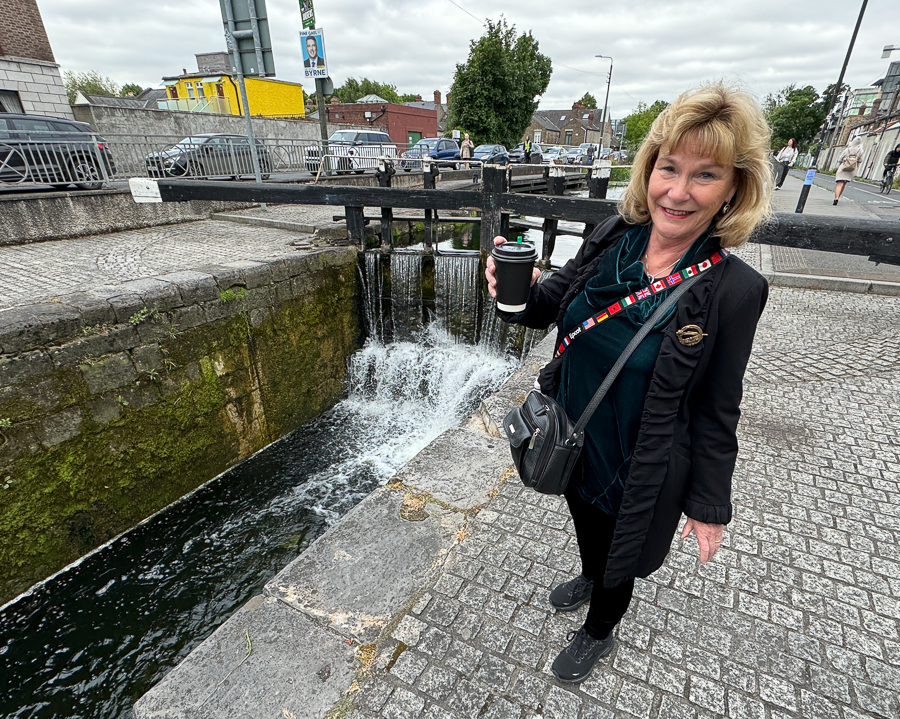
Mary was happy, she had her morning coffee.

We waited for the bus to arrive. It was right on time and also very empty. We sat in the first seat at the top near the windshield. It was scary as the bus weaved in and out of traffic at a top speed of Warp Seven! The smell of burning tires lingered in the air, and the screeching sounds of rubber hitting the road were almost deafening. But we made it.

Their app showed us where to stand to pickup the bus.
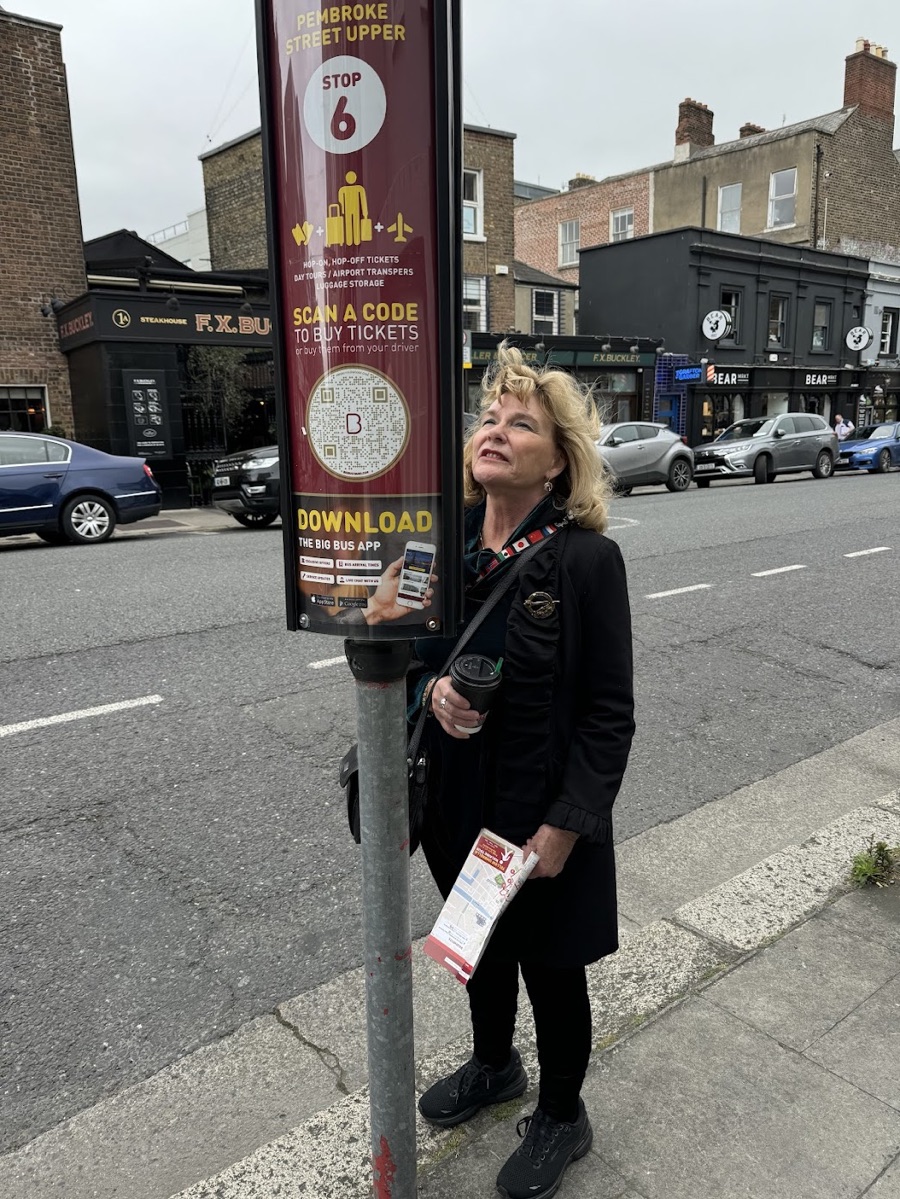
They were right on time.

We saw a lot of sights as we walked along the streets.

From our perch on the top of the bus, we could see everything.
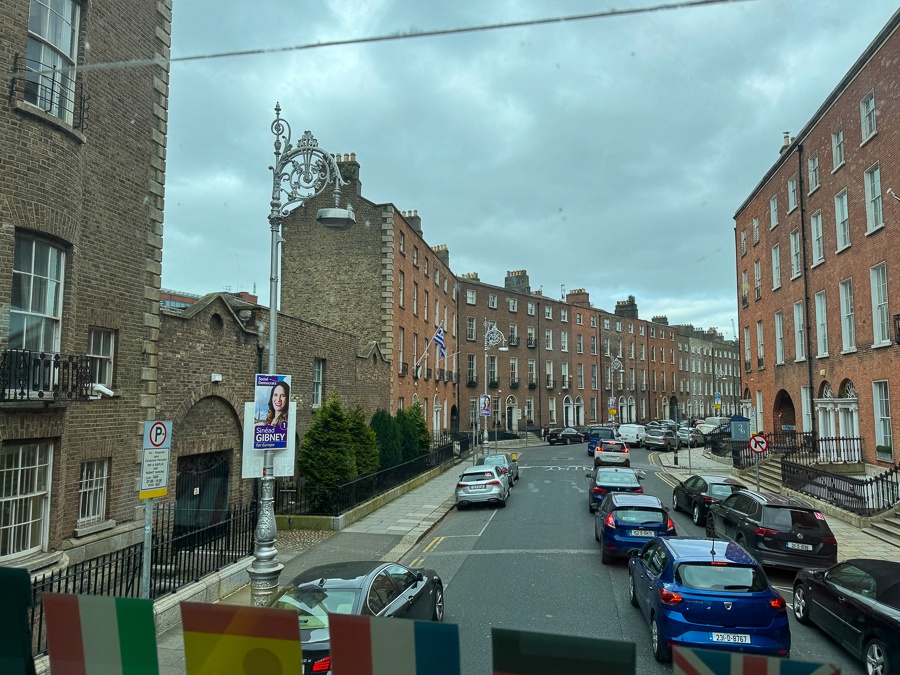
These buildings are fairly old but in excellent shape.
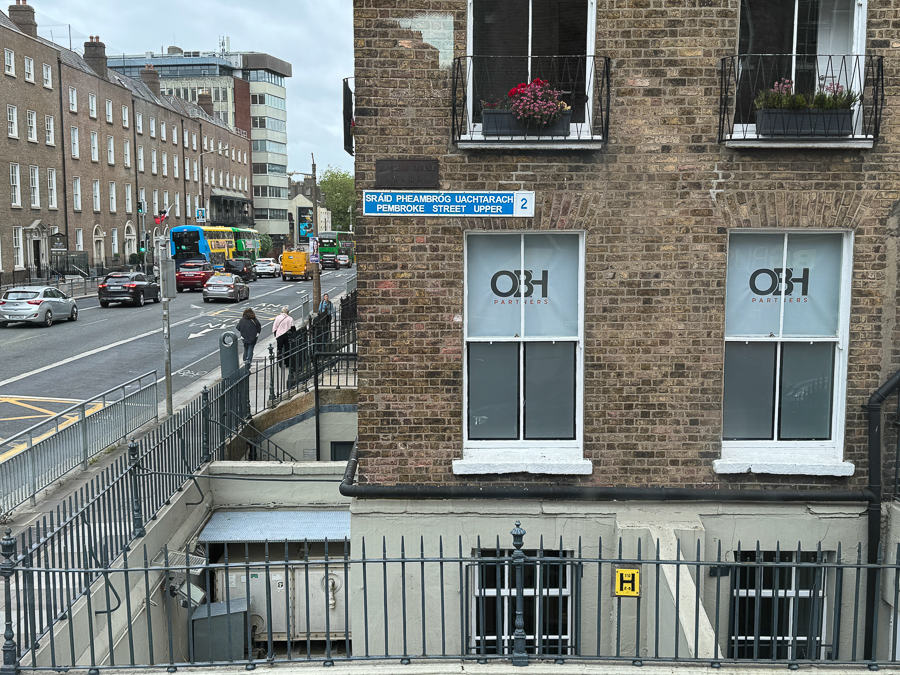
The signage is difficult to find, you better know your way around.

The lower floors are generally businesses and the upper floors residences.

We did not see Mr. Fudd so we did not stop!
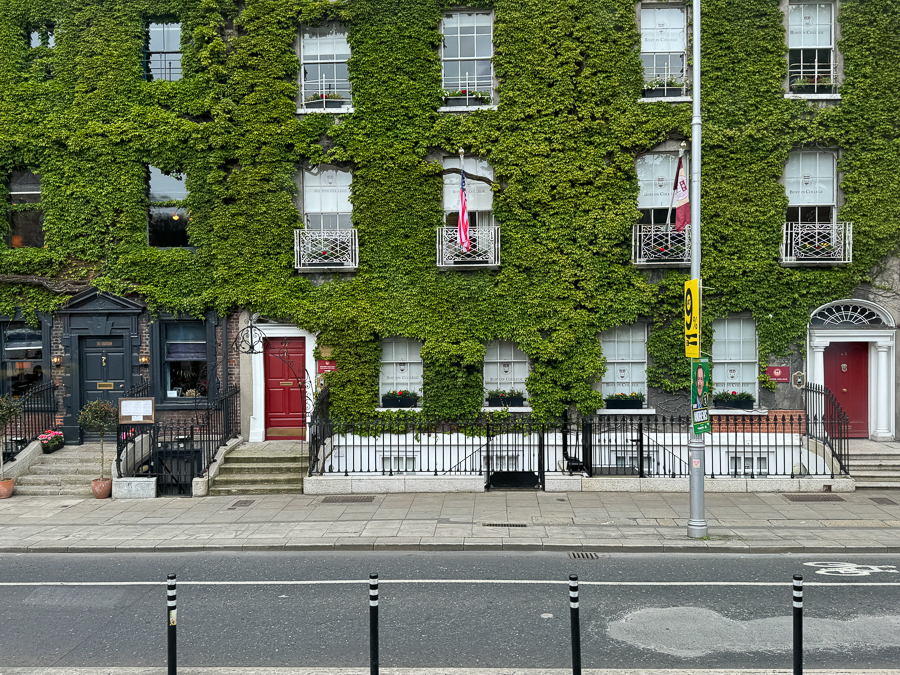
There were a lot of embassy's along this street.

Some streets are paved while others still have the original cobblestone.
Did You Know? - The Romans first invented cobblestone streets. The first recorded cobblestone roads appeared in Rome's unparalleled network of roads in the third century. The term cobblestone refers to the smooth, round shape of the stones that workers picked up in rivers and streams.

The buildings were here well before electronics!

There was always a rat's nest of wiring on the ledges providing telephone and Internet inside the building.

The electricians nightmare.
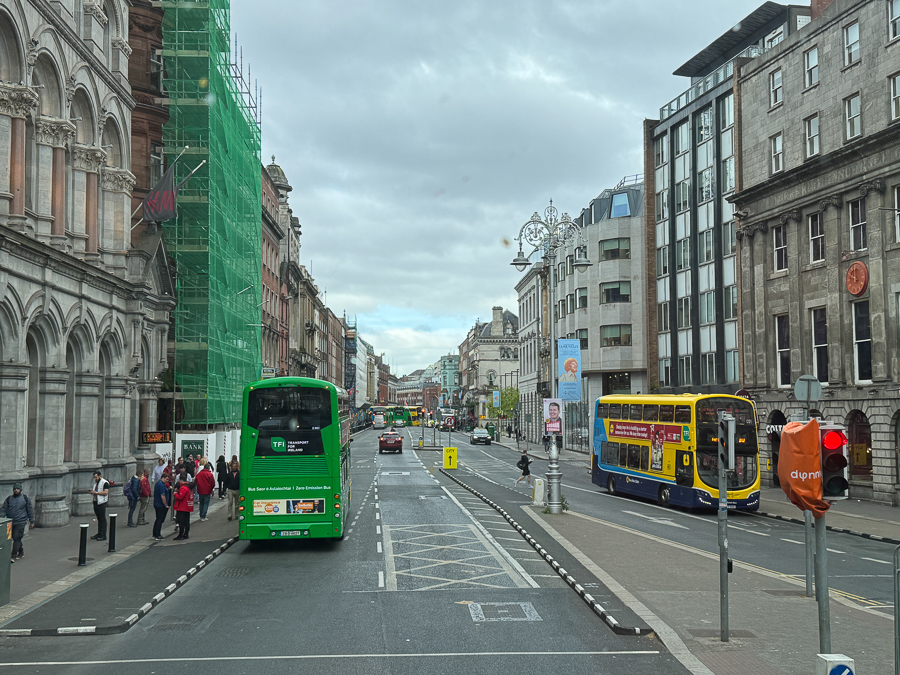
Busses roamed the city and they were full, not like to USA.
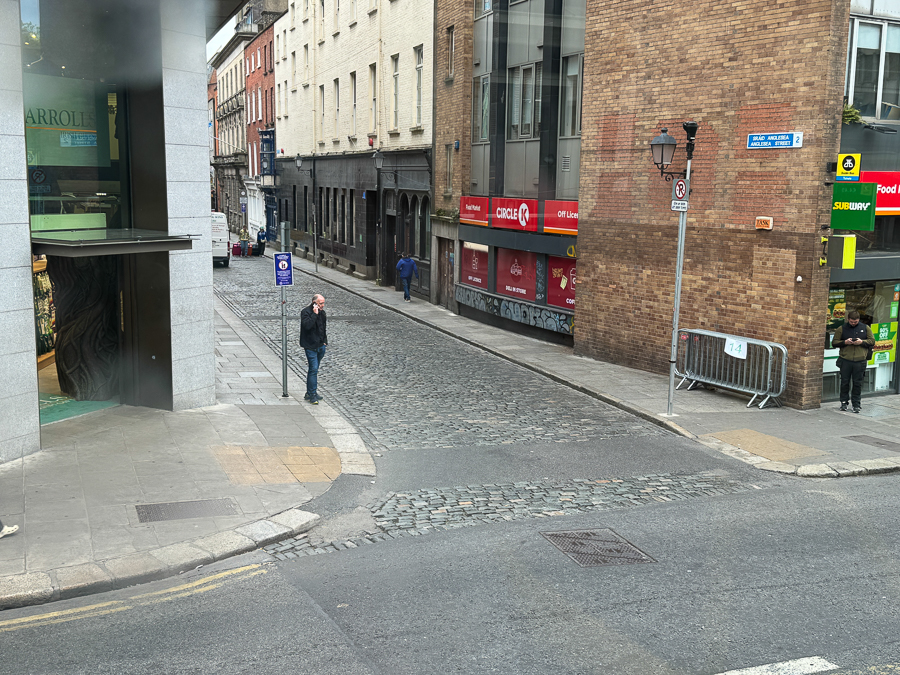
There still remains a lot of cobblestone alleys and small streets.
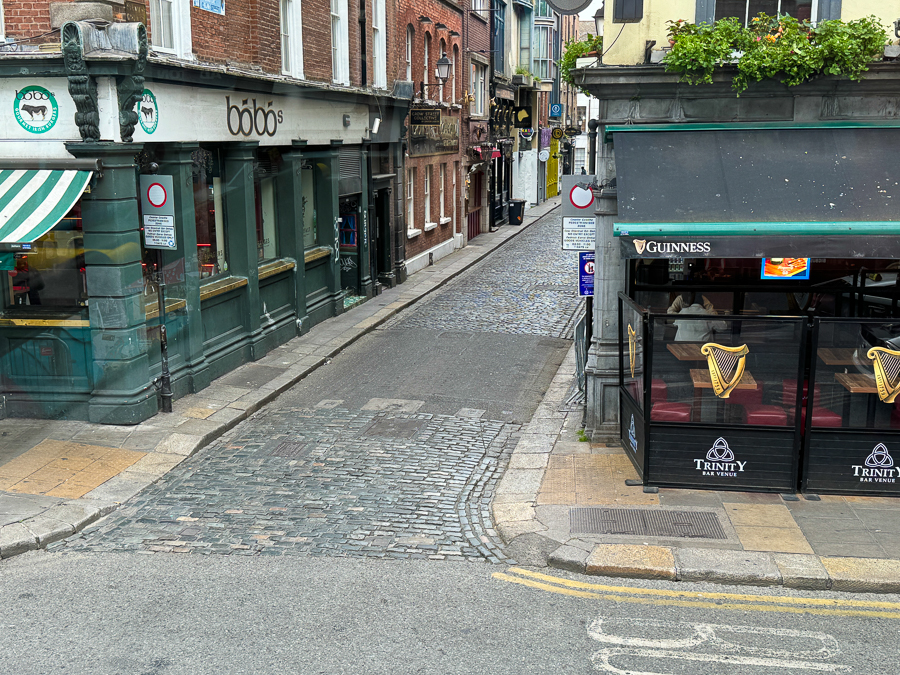
The transition between paved and cobblestone is dramatic when you are driving.

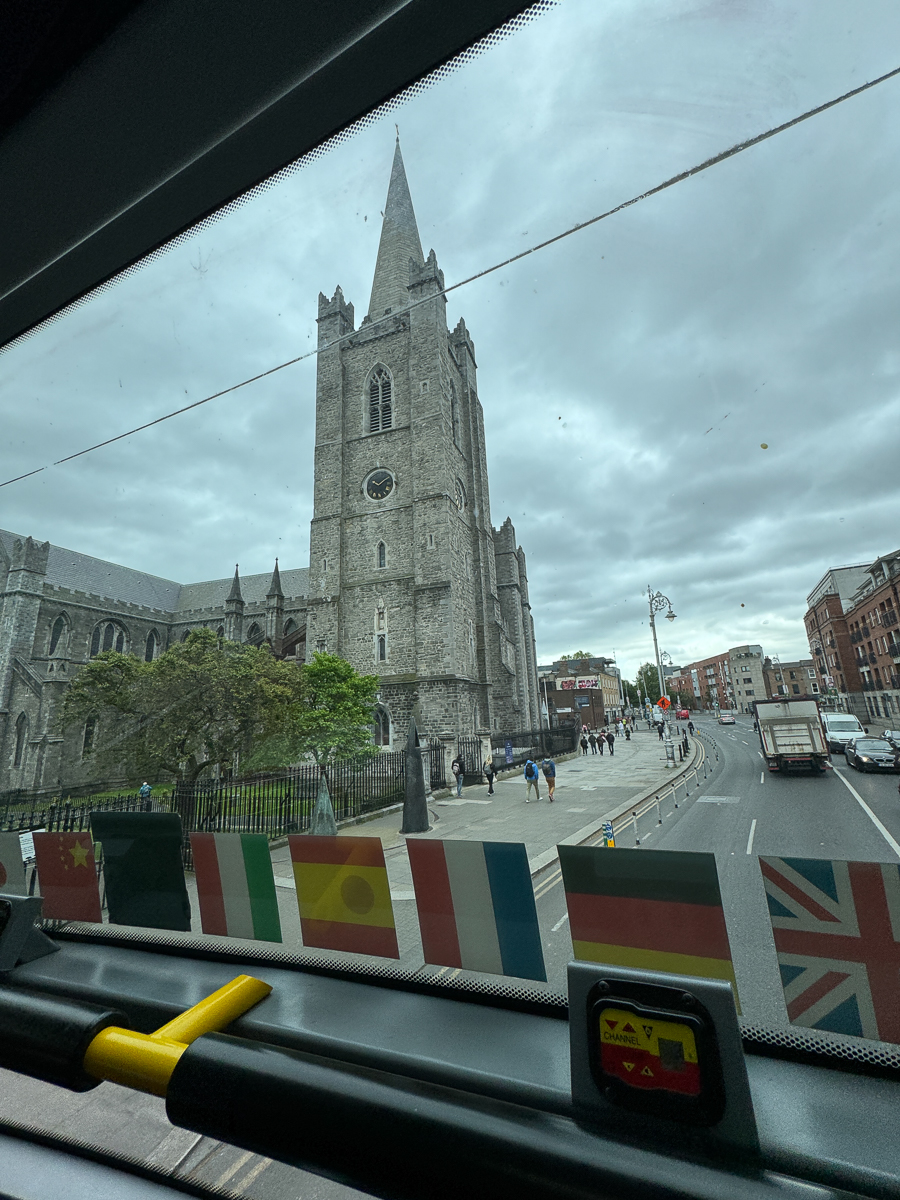
Churches were everywhere.
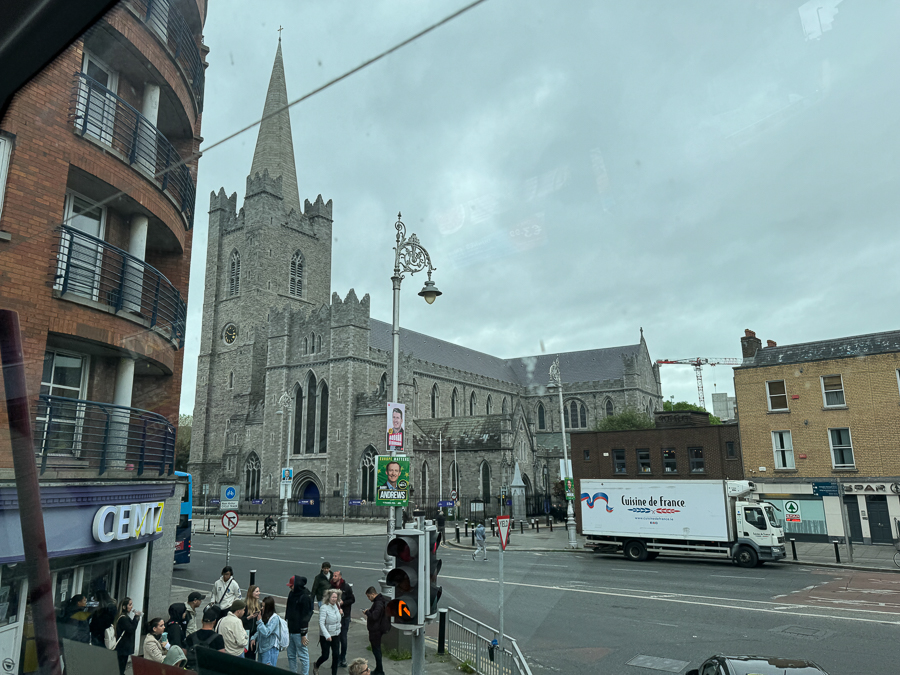
St. Patrick's gets loads of visitors.

St. Patrick's has been there for centuries.
Did You Know? - Saint Patrick's Cathedral in Dublin, Ireland, founded in 1191 as a Roman Catholic cathedral, is currently the national cathedral of the Church of Ireland. Christ Church Cathedral, also a Church of Ireland cathedral in Dublin, is designated as the local cathedral of the Diocese of Dublin and Glendalough
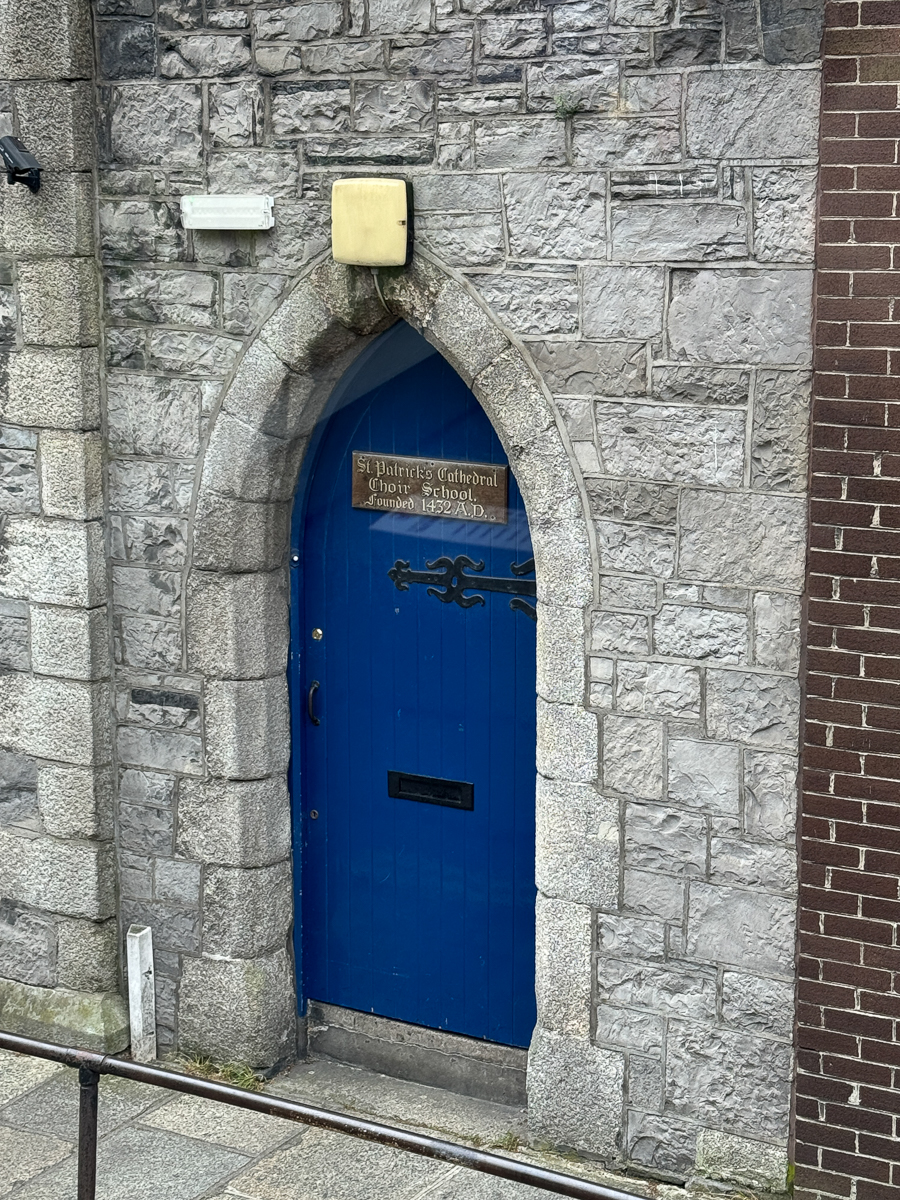
Checkout the dates on this building.

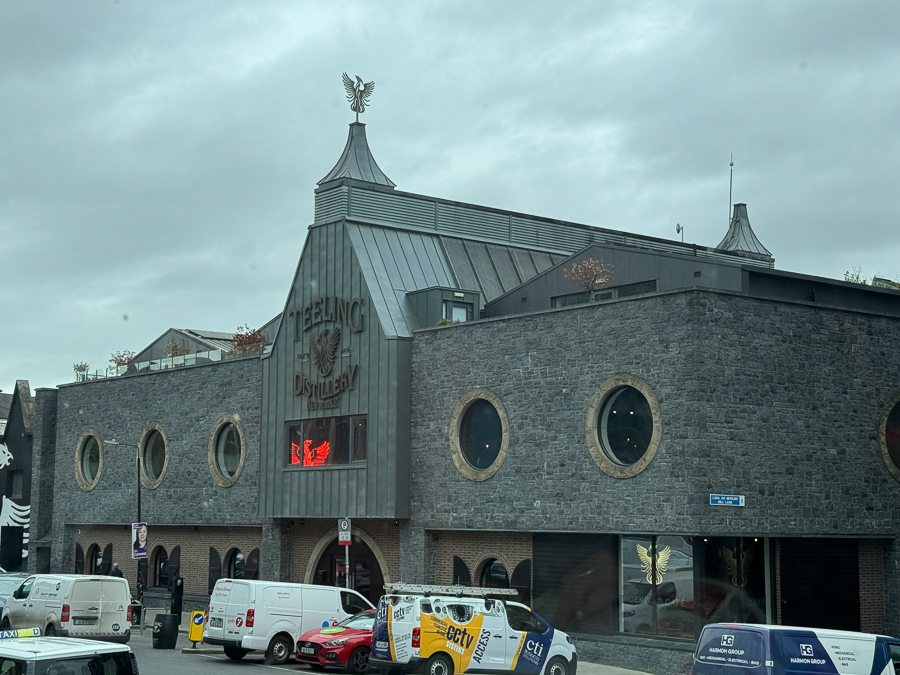
Another famous distillery was Teeling.
Did You Know? - Teeling Distillery is an Irish whiskey distillery established in Dublin in 2015 by the Teeling Whiskey Company. It is the first new whiskey distillery to have opened in Dublin, once a world whiskey distilling capital, in over 125 years.
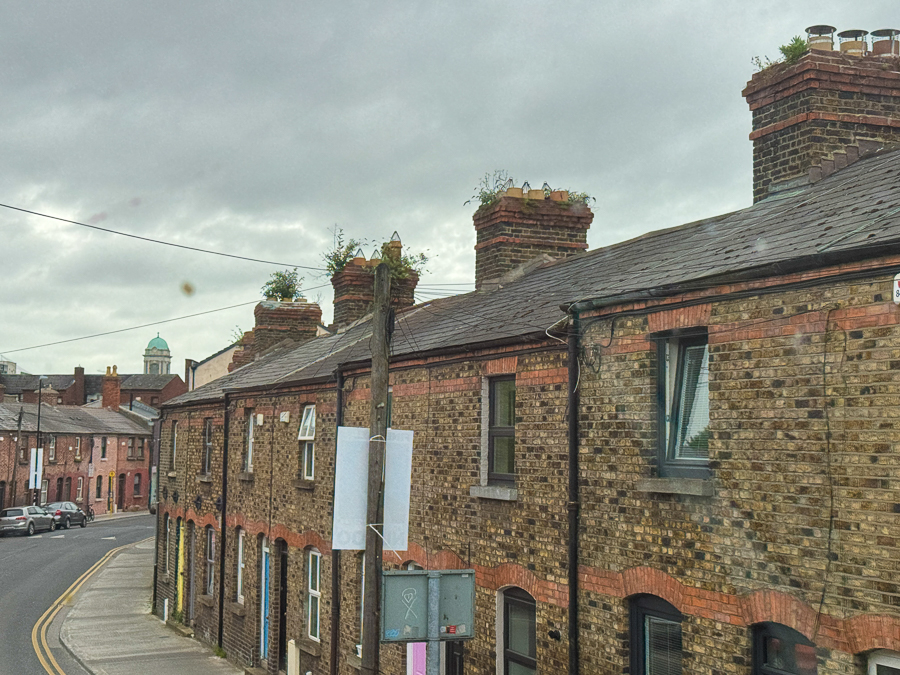
These houses were built for the Guinness employees
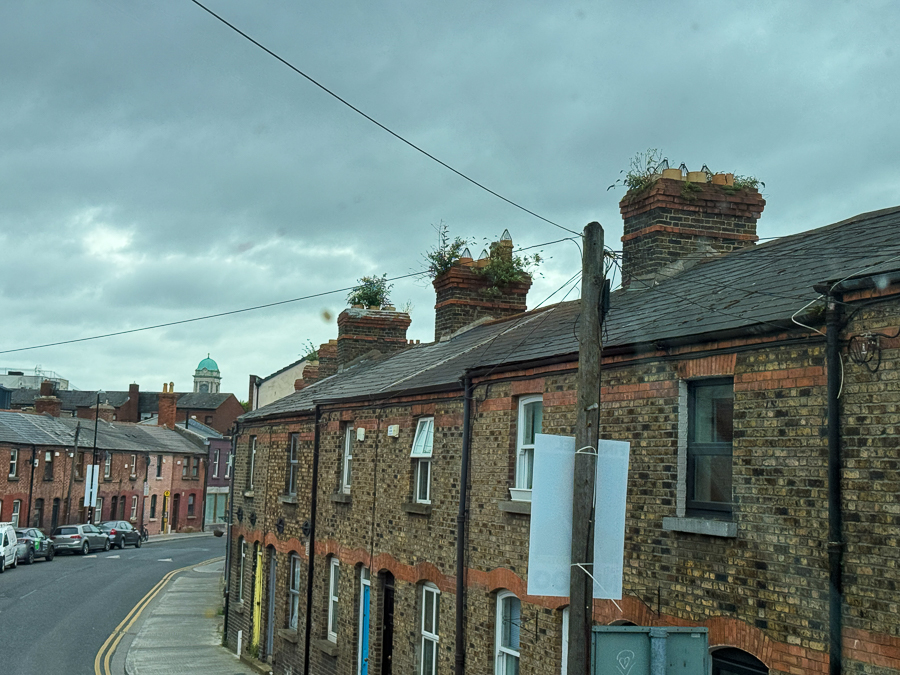
Checkout the chimneys; soot and bird poop make for great soil!

We were dropped off at the main gate.
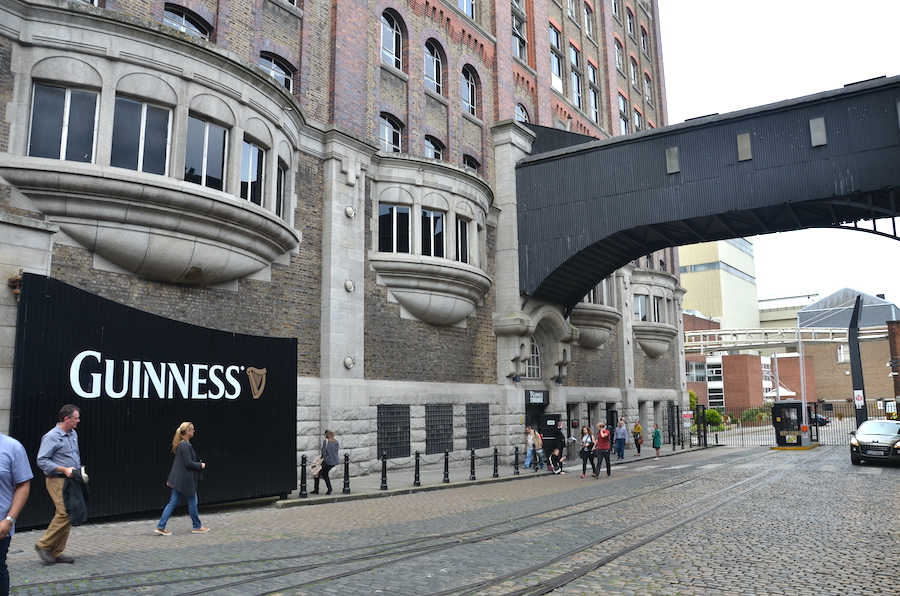
Oops!
We jumped off at the Guinness Distillery since we had a noon reservation. We then discovered our tickets were for Jameson Distillery! It was already busy.
Then we looked at the tickets, and they were for tomorrow! We had no tickets for Guinness at all; the tickets we had were for Jameson Whiskey Distillery! Oops!
We told the bus driver about the situation, and he checked. Using this on-line app, he found nothing open today or tomorrow.
After a few minutes of Mary crying alligator tears and me weeping, he went inside the Guinness building and motioned us inside.

"Please Mr. Bus Driver, save me!!"
Our bus driver had "pulled" a few strings, and we could buy tickets for tomorrow! We did and Moma is happy! He got a good tip!!
We then headed to the Jameson facility and took the tour (we had tickets for Jameson). It was founded by John Jameson in 1780, and today, the former factory is a monument to Irish whiskey.

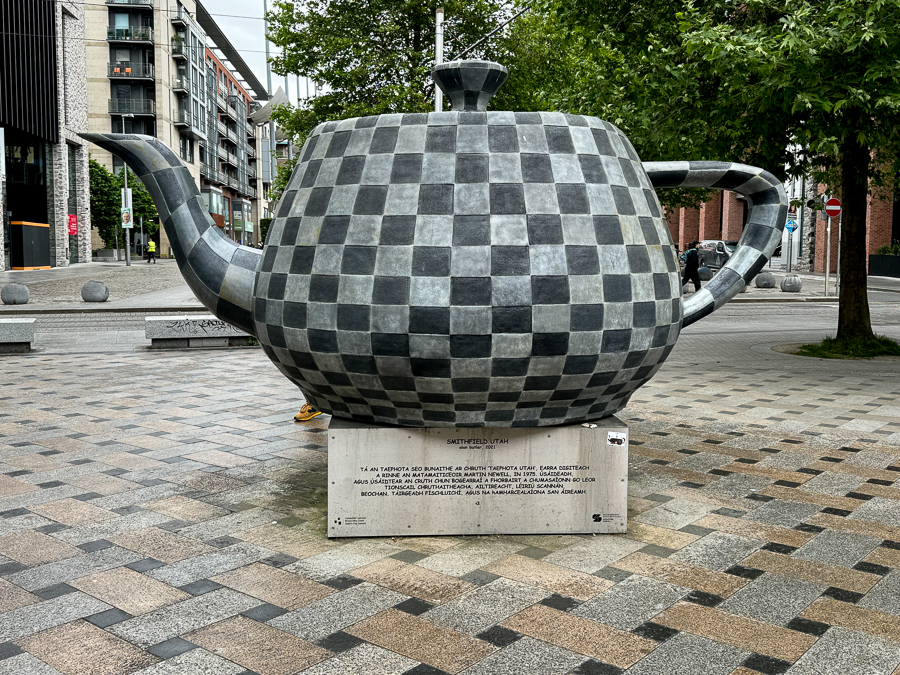
We had an hour to wait so we strolled the local businesses and had some coffee.
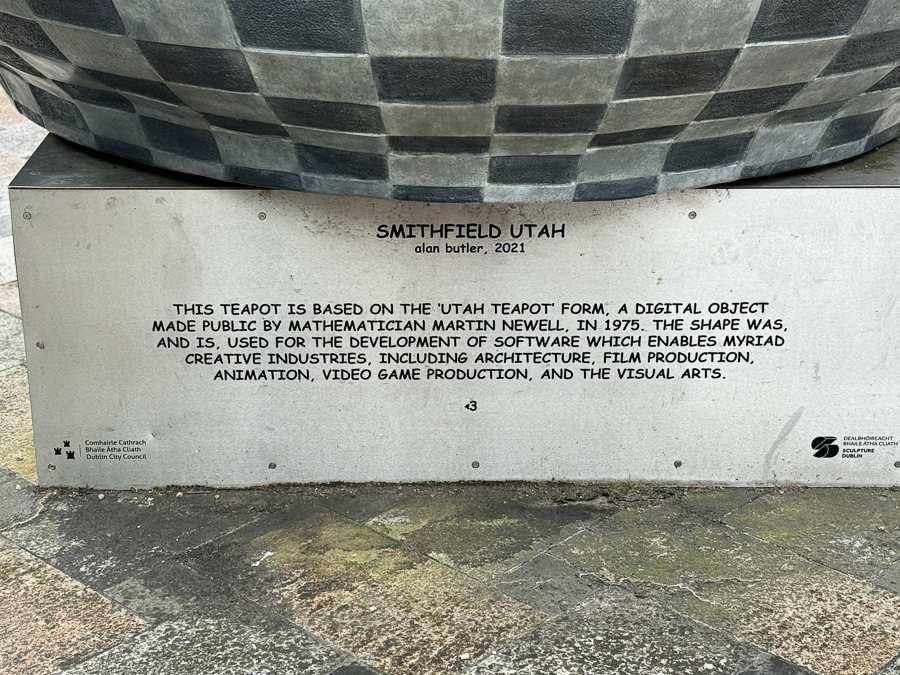

We made good use of our phones, we could not get lost easily.

They said right around the corner, they were right!
Long ago, in a time before selfies, we were founded by that man, John Jameson. Born in Alla in Scotland in 1740, he came to Dublin in the late 1770s. Four of his sons followed him into distilling in Ireland, setting up a family dynasty that was to last for generations. He died on the 3rd December, 1823 at the ripe old age of eighty-three.
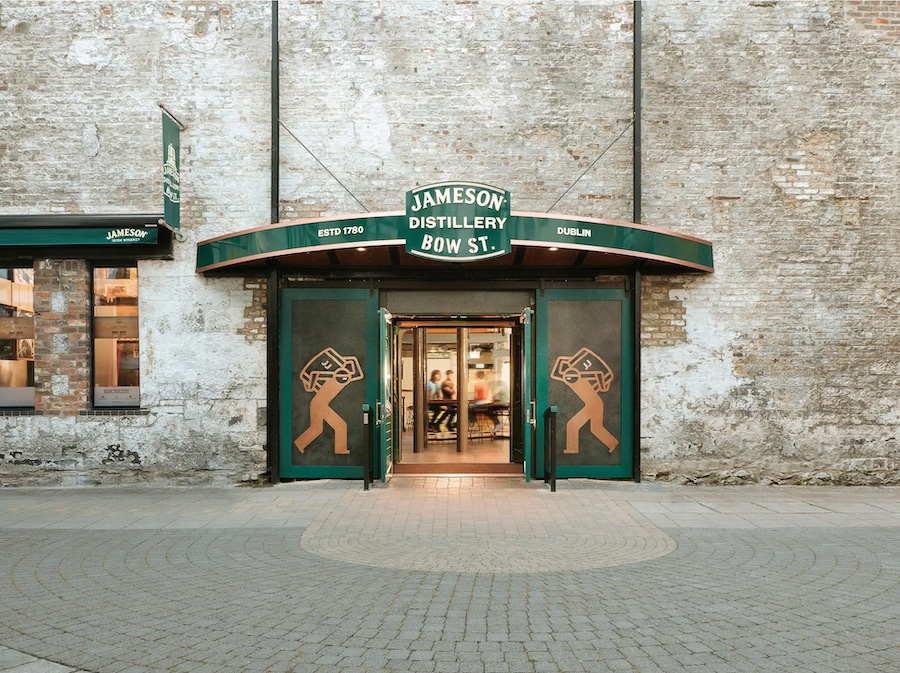
Enter ye who dare!!

The vat was a dead giveaway!
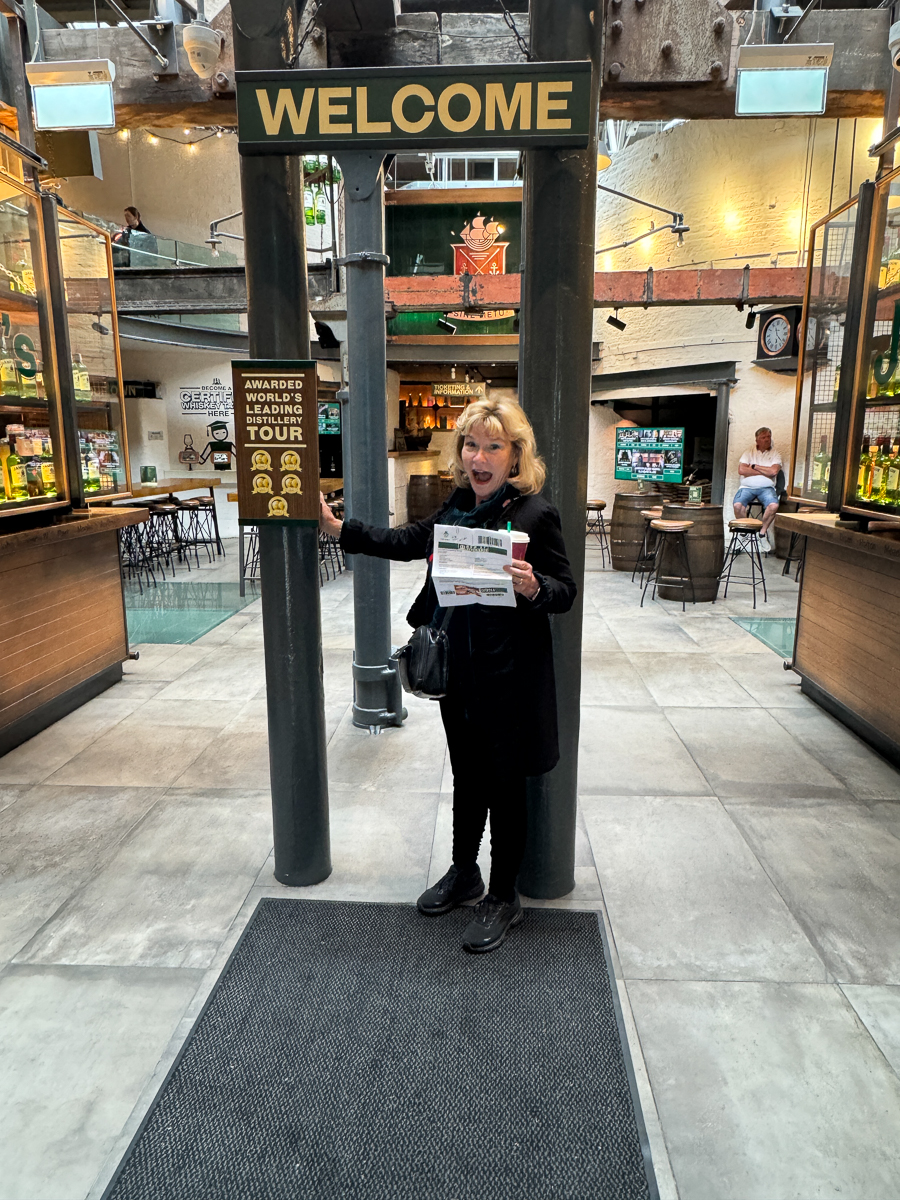
We made it!!

A nice tourist proved that we were there together!

Happy knowing whiskey was near by!


Oh my!
We got a history lesson first and then entered the science room, where we learned about making whiskey.
Did You Know? - John Jameson, a Scottish legal clerk born in 1740, founded the distillery. His wife, Margaret Haag, was related to the Steins family who owned the Bow Street Distillery in Dublin, where Jameson was originally produced. The brand's label includes the number 1780, the year the distillery opened.
Jameson is triple-distilled for a smooth taste, which is different from most whisks that are only double-distilled. The whiskey is made by blending pot still whiskey from malted and unmated barley with grain whiskey, and is aged in a combination of ways that contribute to its unique flavor. Jameson's water comes from the Fourneyron River, which runs through the distillery, and the barley is locally grown in Ireland.
Jameson is the world's best-selling Irish whiskey and the third best-selling whiskey overall, with 31 million bottles sold annually. It's available in over 130 countries, and in the United States, Jameson accounts for 70% of all Irish whiskey sales.
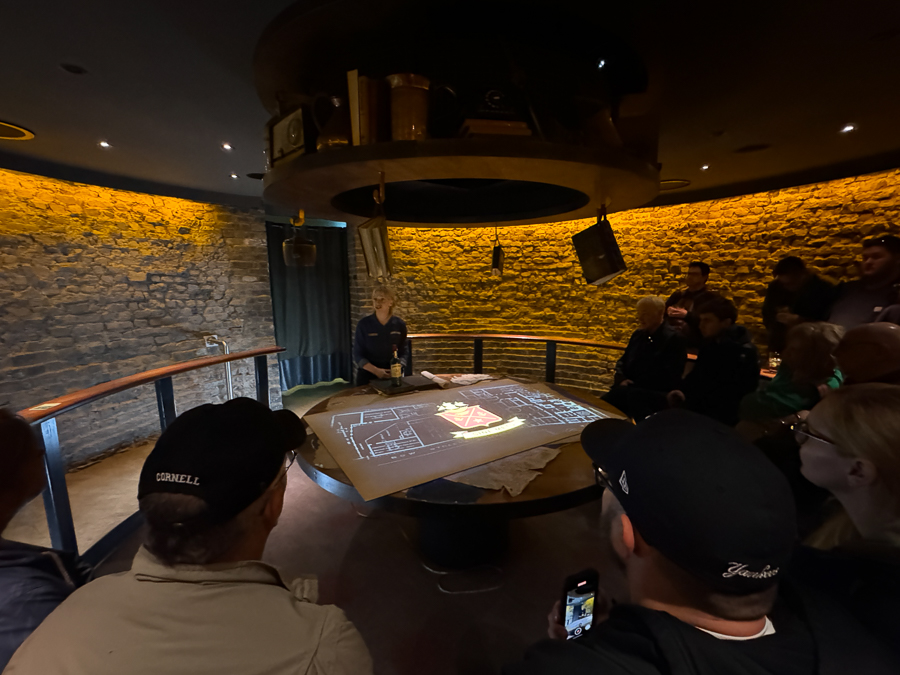
We got a real history lesson using the latest in AV technology.

The family tree was explained.

The essential room, the tasting room!
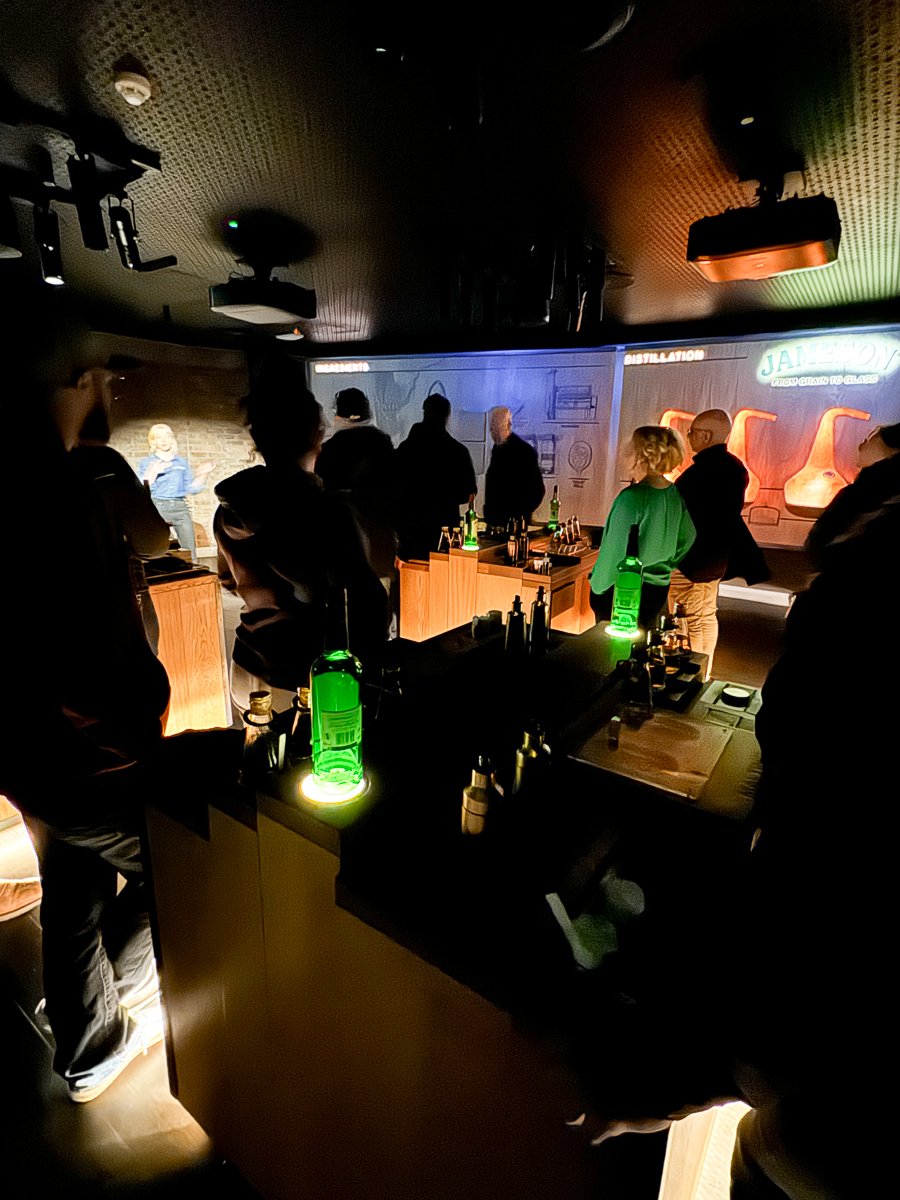
The distillation process was explained.

The whiskey was quite different between the three we tasted. Crested is "barrel proof" meaning a lot more alcohol.

I was dead serious about this part of the tour.
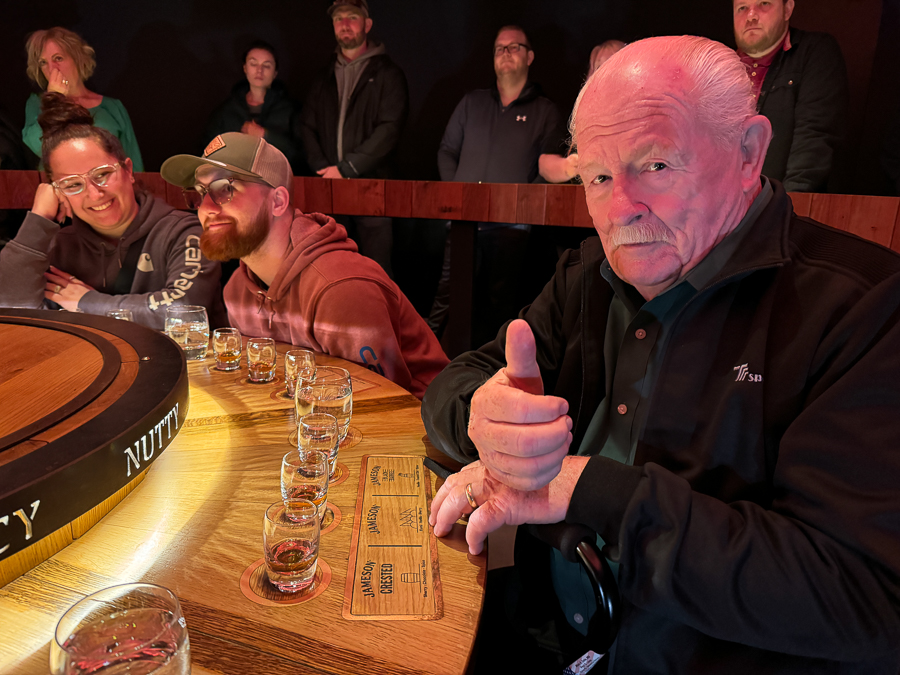
More Barkeep!!

The room was well done.
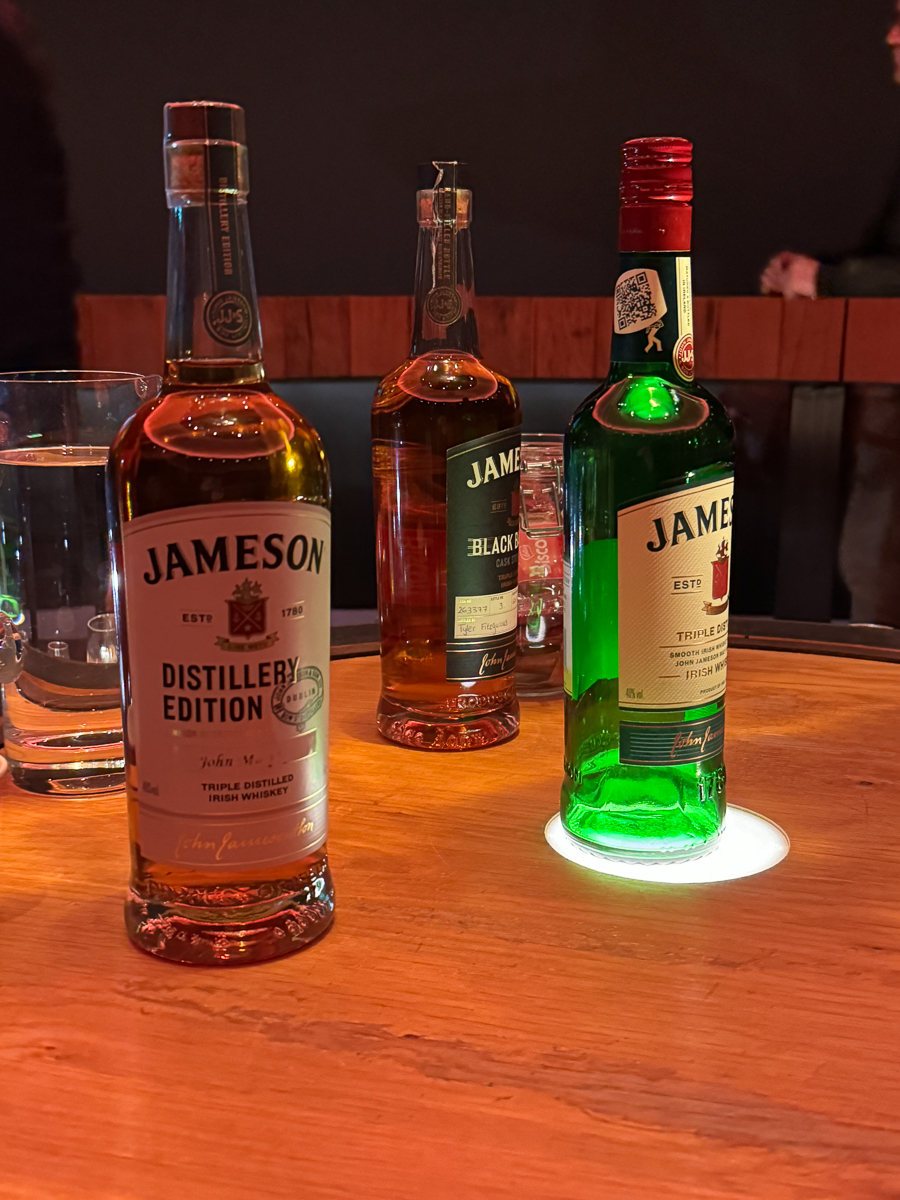
Oh my!!!
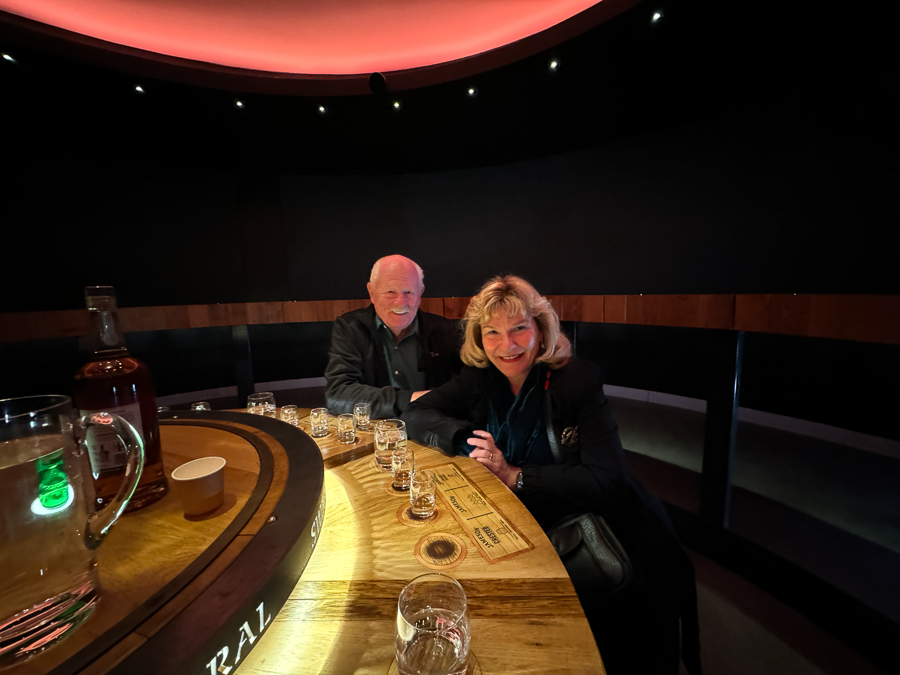
We went back for more.

Happy people.

We hated to leave.

This is the real stuff.

We wanted to get one of these for Jeff but alas, it would NOT fit into the suitcases.

We did some shipping and now are ready to jump back on the bus.

Great fun with my best friend.


We walked from Jameson to our Get On-Get Off bus stop and there it was, graffiti!
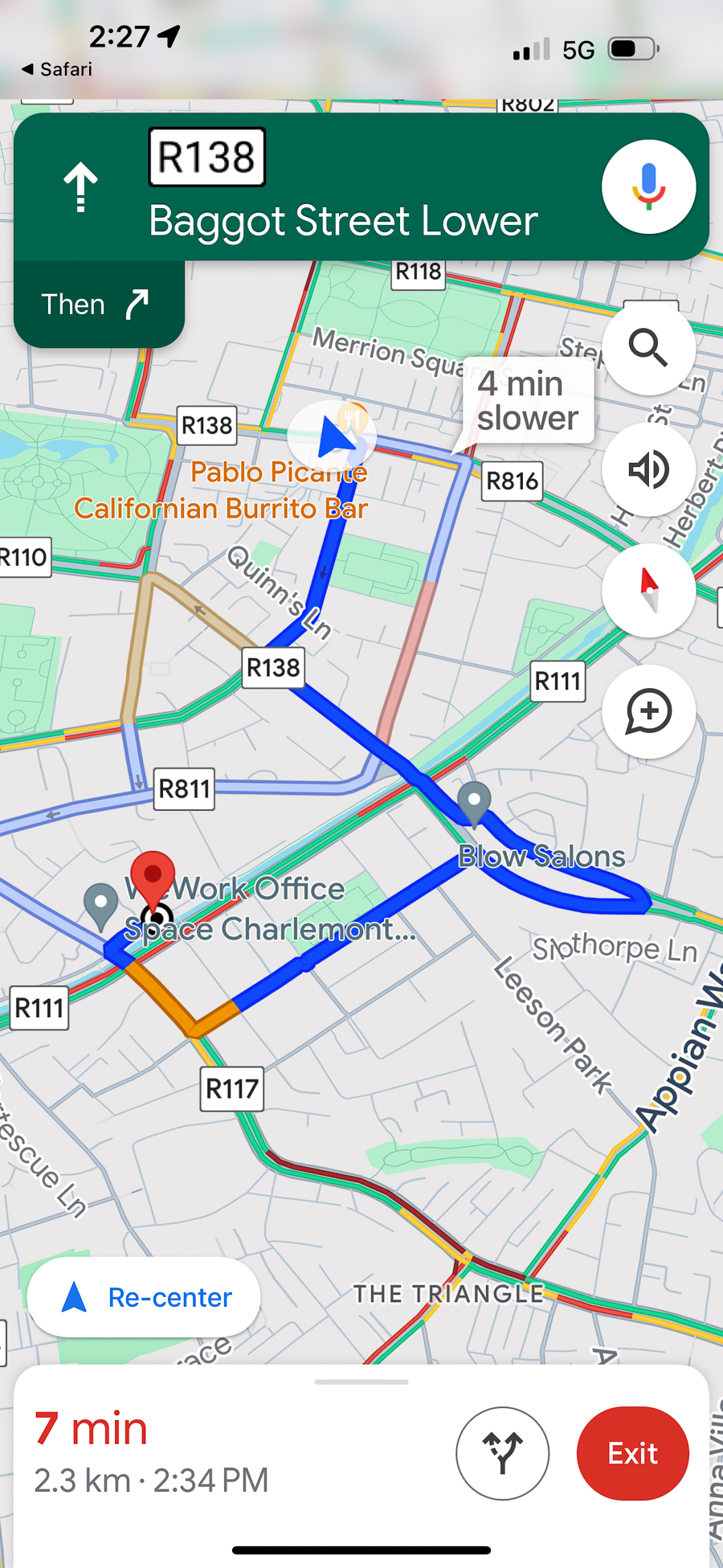
The GPS said they had a Mexican Restaurant?

Their food was authentic, as good as we get in LA. Read about it.

The menu was pretty good.

Too bad about the ring in her nose! She had been to too many bullfights!

Loved the selection of salsas.

We go onto our bus and headed to stop #6 which was close to our hotel.

The Grand Canal was not very busy.
Did You Know? - The Grand Canal is a 19th-century engineering marvel that runs from Grand Canal Dock to Inchicore in Dublin, Ireland, and then out to Adamstown in the suburbs. It's the southernmost of two canals that connect Dublin to the River Shannon in the west, passing through Tullamore and other towns and villages. The canal is a vital part of Dublin's cityscape, known for its tree-lined banks, clear waters, elegant architecture, ornate bridges, and unique ecosystem.
The Grand Canal (Irish: An Chanáil Mhór) is the southernmost of a pair of canals that connect Dublin, in the east of Ireland, with the River Shannon in the west, via Tullamore and a number of other villages and towns, the two canals nearly encircling Dublin's inner city.
The Grand Canal is an important aspect of the landscape of South Dublin and provides a unique eco system in an urban area. It flows between Clondalkin and Lucan and through the areas of Clonburris, Kilmahudric, Grange, Kishogue and Cappagh linking togeather the natural and the built environment.

The canal was relatively clean although the city had to put up fences along the waterway to keep the homeless from camping and spoiling the area,

The city keeps the growth well trimmed.

The flowers were a plus.



The hotel was quite nice.
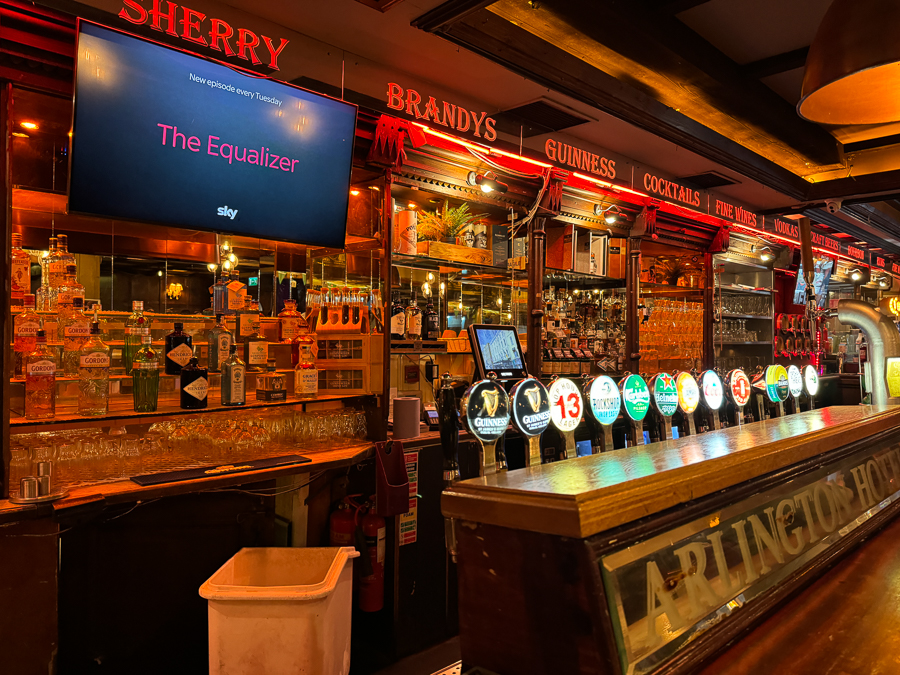
We got there early and went next door and had a pub experience!
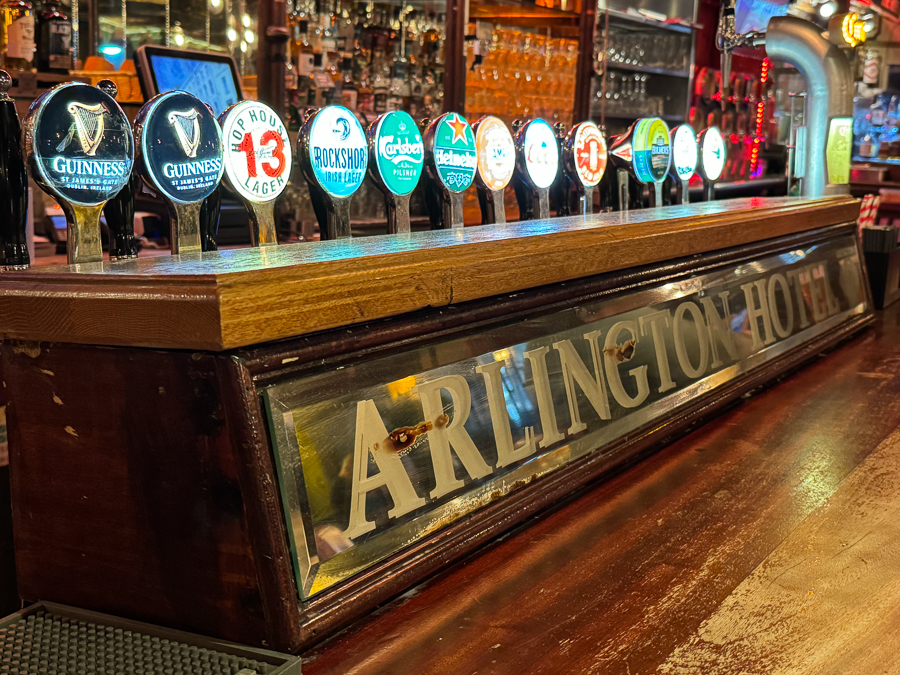
Beer selections meant we needed to have one of each!

The theater was in the basement of the hotel.

The stage was set and we are ready.
Did You Know? - Now in its impressive 28th consecutive season, Celtic Nights mesmerizes audiences seven nights a week, all year round. Its enduring allure continues to captivate visitors from across the globe, fueled by its vibrant energy, heartfelt passion, and that unique Irish spirit known as the 'craic'. The show boasts a stellar ensemble of Ireland's finest traditional musicians and world champion Irish dancers, orchestrated to ensure maximum engagement and entertainment for the audience. It showcases the essence of Ireland's 'sean nos' (old style) Irish dance, along with the renowned Brush Dance. This captivating showcase also delves into the rich history of Irish music, providing a deep connection to our cultural heritage.

Love those candles!

That's my girl!

A beautiful candle holder! hic!
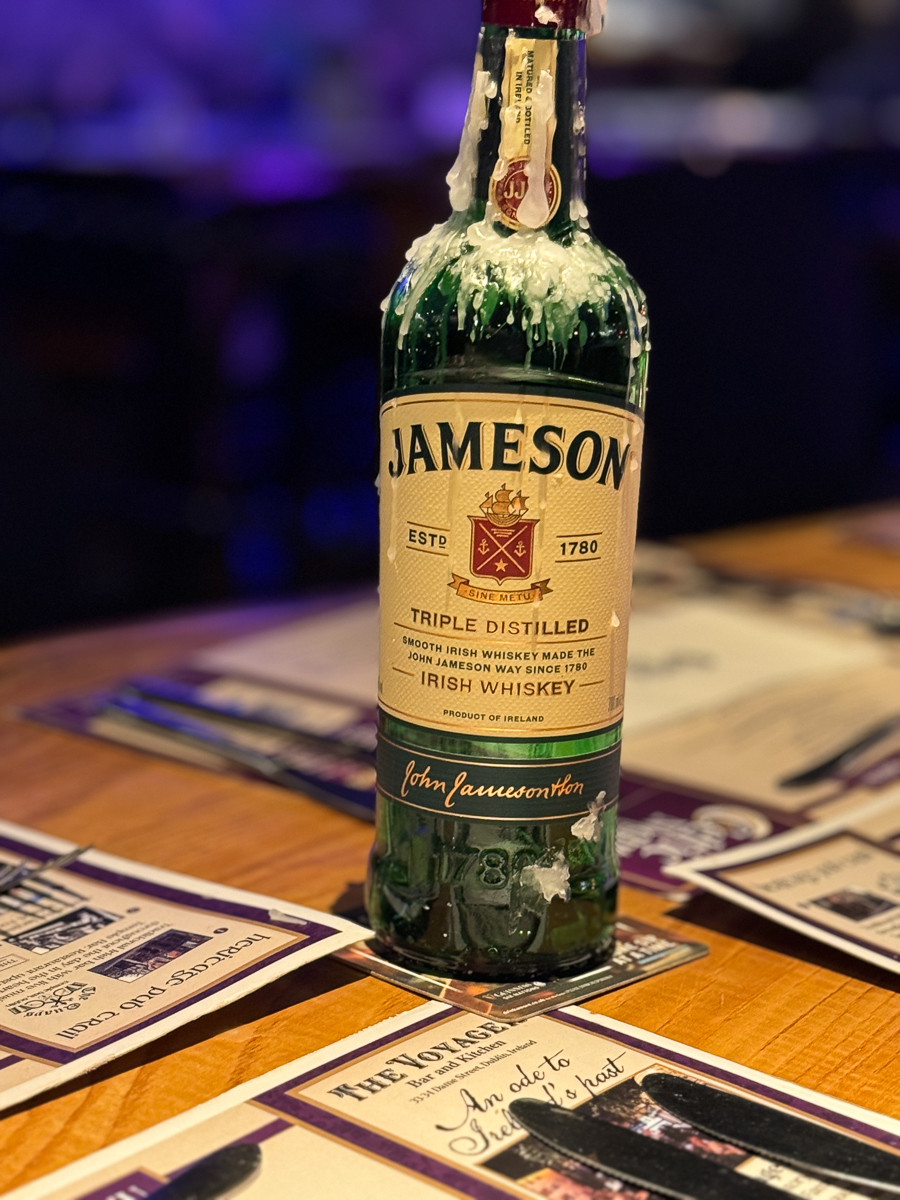
Looking good!

My Wild Irish Girl!
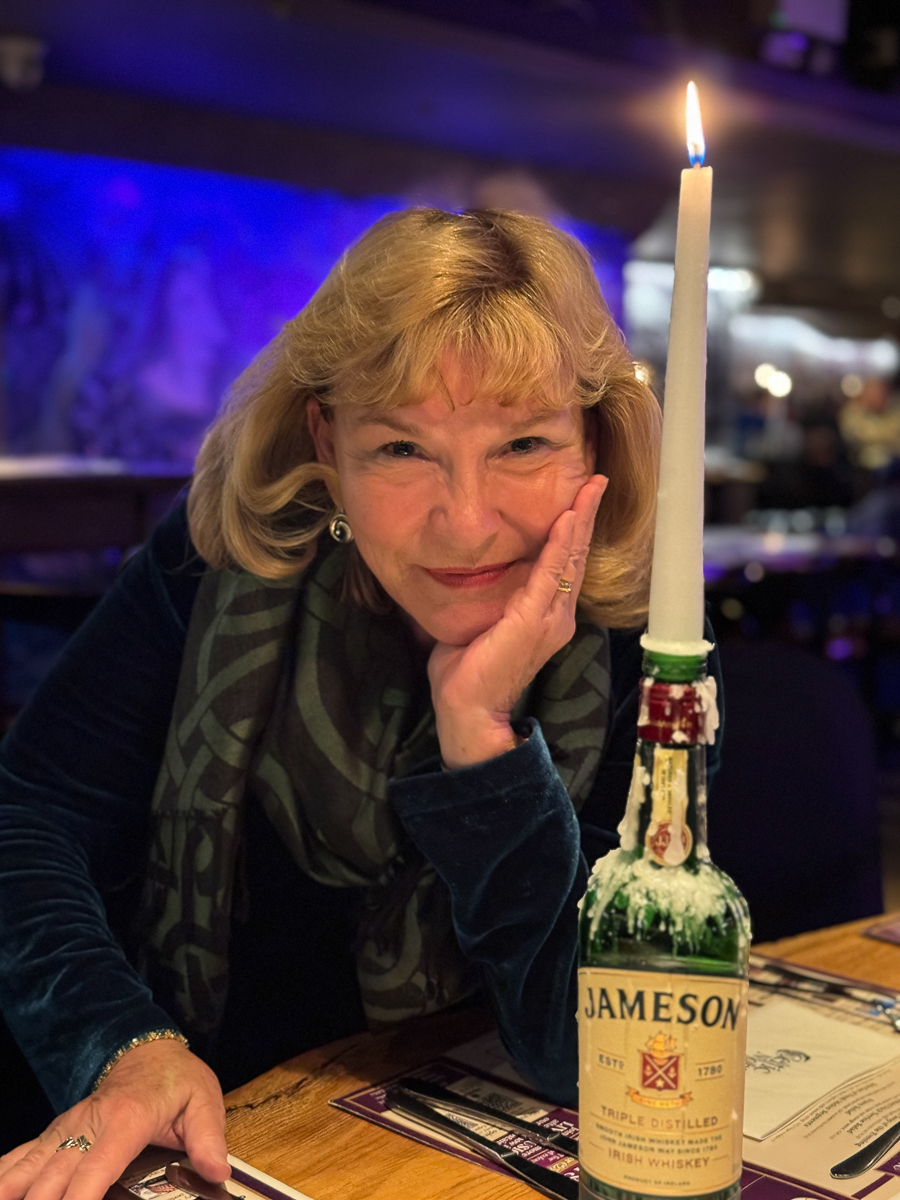
Wow!

Now we are talking, we have bread!

Right out of the oven!

The breads were absolutely delicious and calorie free (ha ha).

Taste resting is essential!

When in Ireland we have Irish Stew!
Did You Know? - Irish stew or Stobhach is a stew from Ireland that is traditionally made with root vegetables and lamb or mutton, but also commonly with beef. As in all traditional folk dishes, the exact recipe is not consistent from time to time, or place to place.
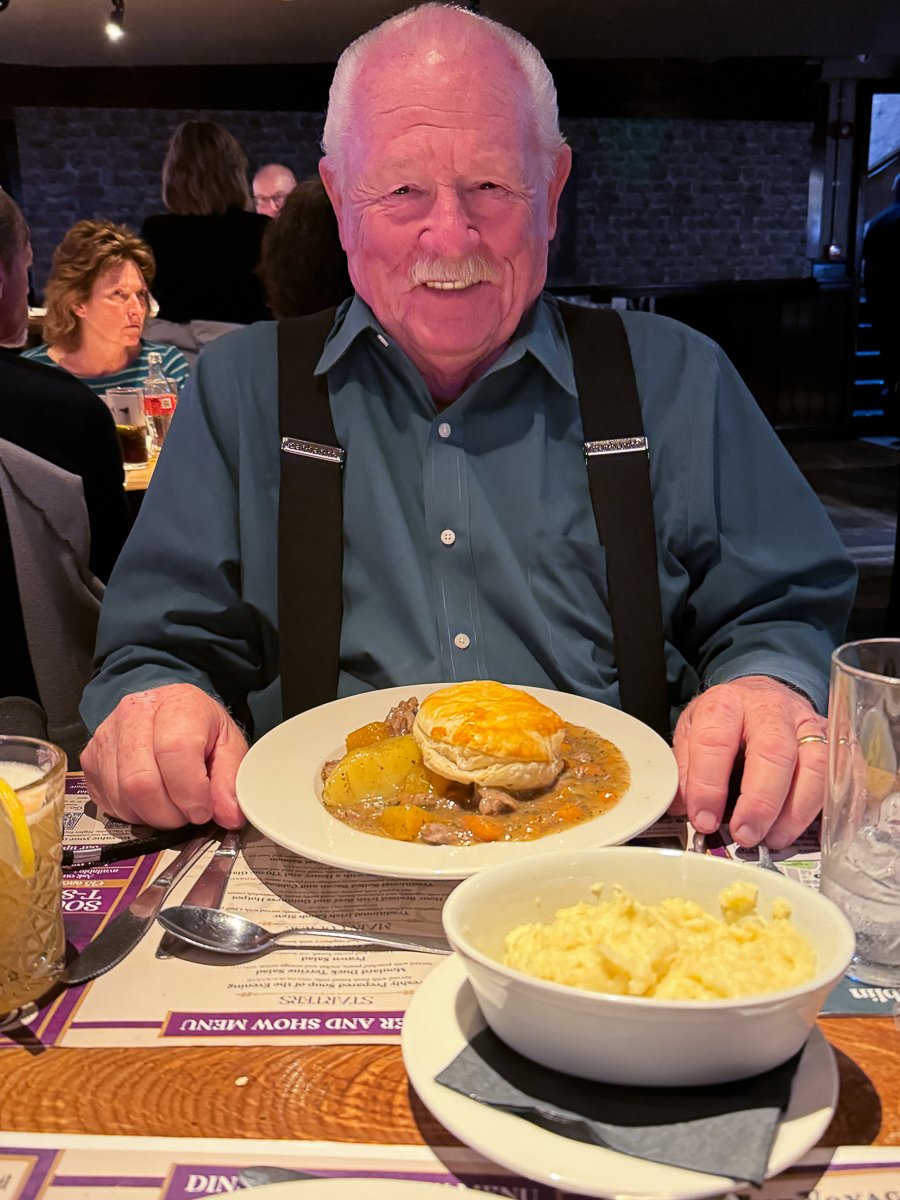
I had an Irish dish also.
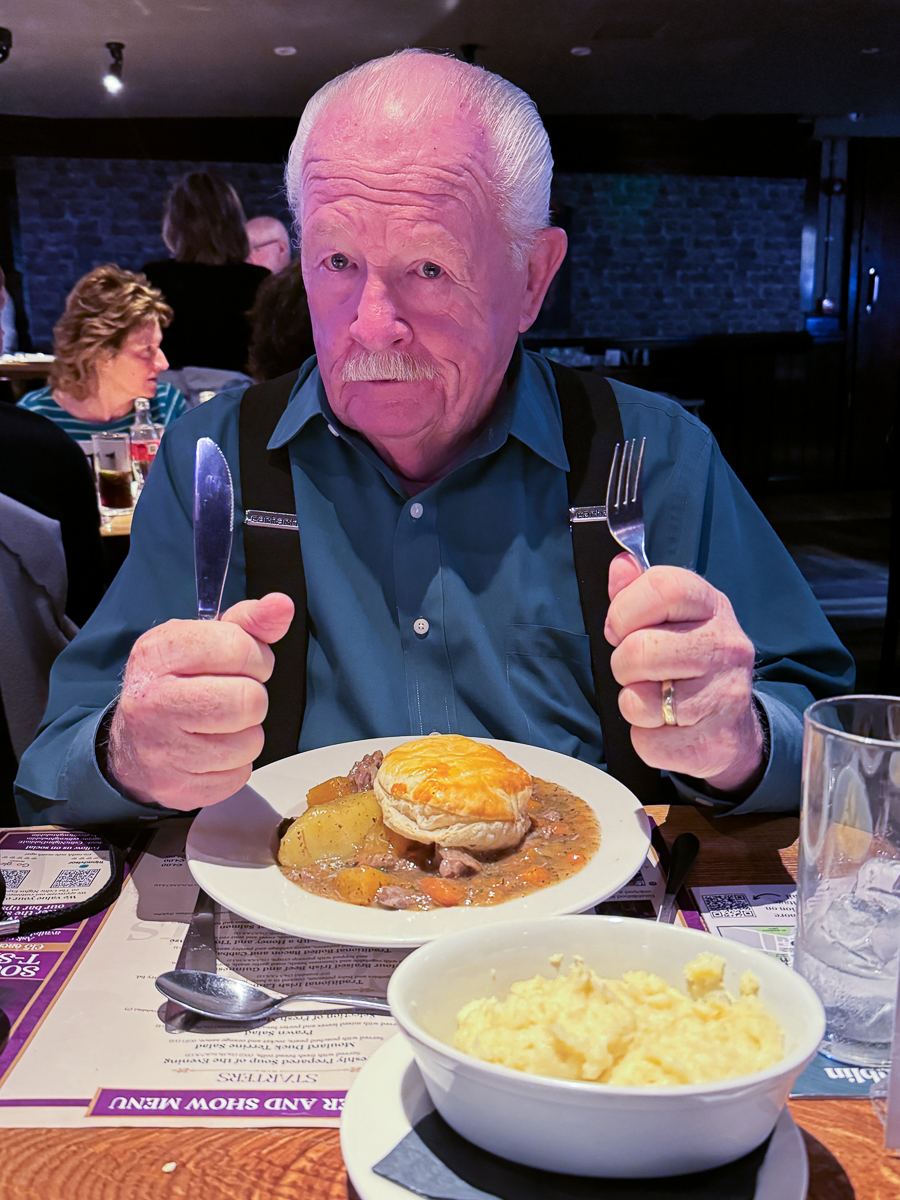
Over the teeth and through the gums, look out tonsils here it comes!
Lamb stew!
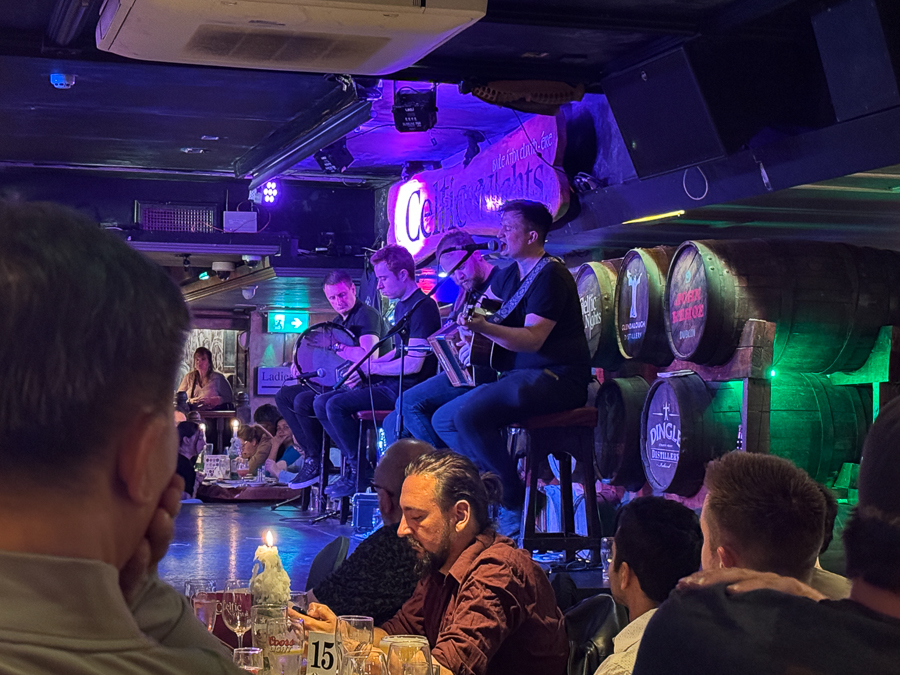
The entertainment gets underway!

We were hooping it up!

During the two-hour performance, we consumed a bottle of champagne and then took a taxi to the hotel. The doorman at the bar where we first stopped saw us exit the theater and stopped a taxi for us.

